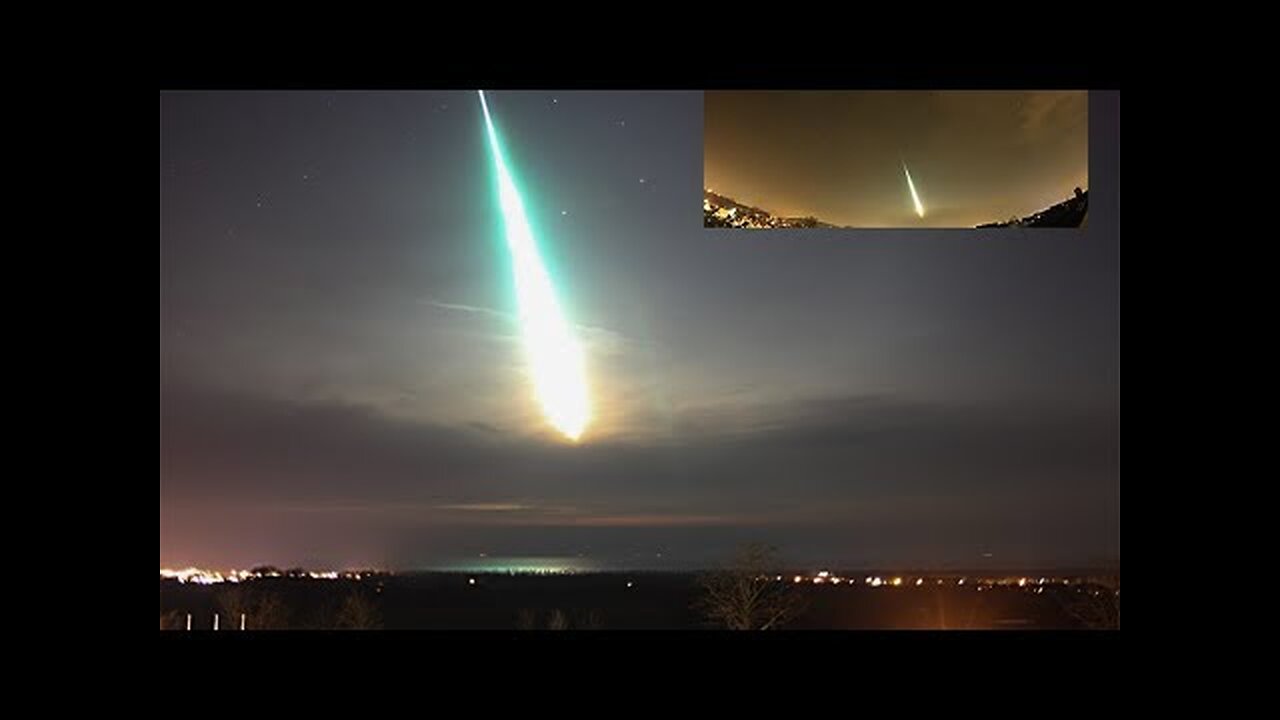Premium Only Content

TOP 5 METEORITE FALLS
Meteorite falls, also called observed falls, are meteorites collected after their fall from space was observed by people or automated devices. All other meteorites are called "finds". There are more than 1,100 documented falls listed in widely used databases, most of which have specimens in modern collections. As of early 2018, the Meteoritical Bulletin Database has 1,161 confirmed falls.
Observed meteorite falls are interesting for several reasons. Material from observed falls has not been subjected to terrestrial weathering, making the find a better candidate for scientific study. Historically, observed falls were the most compelling evidence supporting the extraterrestrial origin of meteorites. Furthermore, observed fall discoveries are a better representative sample of the types of meteorites which fall to Earth. For example, iron meteorites take much longer to weather and are easier to identify as unusual objects, as compared to other types. This may explain the increased proportion of iron meteorites among finds (6.7%), over that among observed falls (4.4%). There is also detailed statistics on falls such as based on meteorite classification. As of early 2018, the Meteoritical Bulletin Database has 1,161 confirmed falls with statistics for the previous decades in the table to the right. Specifically, confirmed falls were eight for 2015, eleven for 2016, and four so far for 2017.
The German physicist Ernst Cladni, sometimes considered as the father of meteoritics, was the first to publish (in 1794) the then audacious idea that meteorites were rocks from space. There were already several documented cases, one of the earliest was the Aegospotami meteorite of 467 BC and which became a landmark for 500 years.
While most confirmed falls involve masses between less than one kg to several kg, some reach 100 kg or more. A few are even more than one metric ton. The six largest falls are listed below and five (except the 2013 Chelyabinsk meteorite) occurred during the 20th century. Presumably, events of such magnitude may happen a few times per century but, especially if it occurred in remote areas, may have gone unreported. For comparison, the largest finds are the 60-ton Hoba meteorite, a 37-ton fragment (El Chaco) and a 30.8-ton fragment (Gancedo) of the Campo del Cielo, and a 30.9-ton fragment (Ahnighito) of the Cape York meteorite.
The Chelyabinsk meteor was a superbolide caused by an approximately 20-metre near-Earth asteroid that entered Earth's atmosphere over Russia on 15 February 2013 at about 09:20 YEKT (03:20 UTC), with a speed of 19.16 ± 0.15 kilometres per second (60,000–69,000 km/h or 40,000–42,900 mph). It quickly became a brilliant superbolide meteor over the southern Ural region. The light from the meteor was brighter than the Sun, visible up to 100 km (62 mi) away. It was observed over a wide area of the region and in neighbouring republics. Some eyewitnesses also felt intense heat from the fireball.
-
 23:24
23:24
MYLUNCHBREAK CHANNEL PAGE
16 hours agoDams Destroyed Turkey
96.9K81 -
 7:24:43
7:24:43
SpartanTheDogg
9 hours agoPro Halo Player
49.7K1 -
 11:29
11:29
Tundra Tactical
9 hours ago $3.43 earnedGEN Z Brit 3D Prints a WORKING Gun Pt.3!
53.1K3 -
 8:07:55
8:07:55
AdmiralSmoothrod
11 hours agoark ascended - its dino time again
32.4K2 -
 2:08:21
2:08:21
The Illusion of Consensus
9 days agoFormer FDA Official Dr. Philip Krause On White House Pressure To Approve Covid Vaccines at the FDA
69.6K49 -
![[Sabatoge Saturday] Monster Hunter Wilds - w/ Dio!! [crashed at end]](https://1a-1791.com/video/fww1/9d/s8/1/5/g/F/z/5gFzy.0kob-small-Sabatoge-Saturday-Monster-H.jpg) 7:32:40
7:32:40
CHiLi XDD
10 hours ago[Sabatoge Saturday] Monster Hunter Wilds - w/ Dio!! [crashed at end]
23.1K3 -
 DVR
DVR
RyuMuramasa✧
8 hours agoBlade of Vengeance | The First Berserker: Khazan | LIVE Playthrough!
21.7K -
 1:50:26
1:50:26
Darkhorse Podcast
15 hours agoThere’s a New Tariff In Town: The 271st Evolutionary Lens with Bret Weinstein and Heather Heying
67.1K57 -
 29:36
29:36
The Brett Cooper Show
3 days ago $5.56 earnedThe Non-Binary Samurai Game No One Wanted | Episode 19
57.9K41 -
 4:25:56
4:25:56
GamerGril
13 hours agoFistful of GrilCheese 🤠 How The West Was Won 🤠
30.2K1